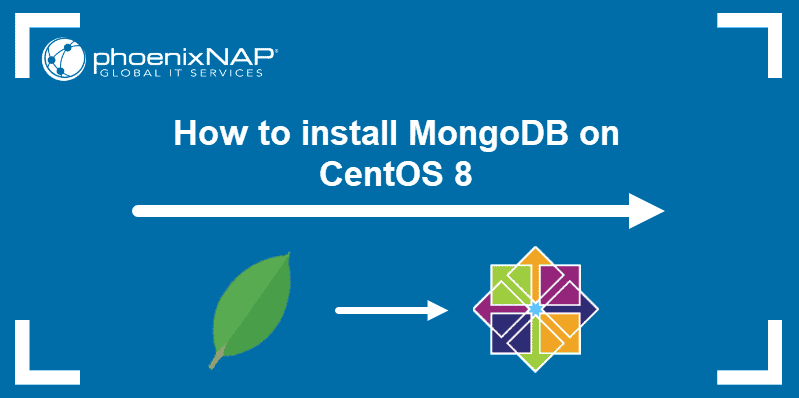Introduction
MongoDB is a document-based NoSQL database application. Unlike MySQL, it allows data to be stored differently in different documents.
It allows for different fields in different documents, and the data structure is not permanently fixed.
In this tutorial, learn how to install MongoDB on CentOS 8.

Prerequisites
- A system running 64-bit CentOS 8 Linux
- User account with sudo or root privileges
- Access to a terminal window/command line
Installing MongoDB on CentOS 8
Step 1: Add the MongoDB Software Repository
By default, MongoDB is not available in the official CentOS repositories. To add the MongoDB repositories, open a terminal window, and create a MongoDB repository configuration file:
sudo nano /etc/yum.repos.d/mongodb-org-4.2.repoIn the newly created repo configuration file, enter the following:
[mongodb-org-4.2]
name=MongoDB Repository
baseurl=https://repo.mongodb.org/yum/redhat/$releasever/mongodb-org/4.2/x86_64/
gpgcheck=1
enabled=1
gpgkey=https://www.mongodb.org/static/pgp/server-4.2.ascSave the file (Ctrl+o) and exit (Ctrl+x).
Note: At the time this article was written, MongoDB 4.2 was the latest version. Please check the MongoDB developer page for the latest version.
Step 2: Install MongoDB Software
Install MongoDB on CentOS 8 with the following command:
sudo yum install –y mongodb-org
Step 3: Start the MongoDB Service
Start the MongoDB service by entering the following command:
sudo systemctl start mongodIf you receive an error that the unit is not found, run the following command, then try the previous command again:
sudo systemctl daemon-reloadIf you’re using MongoDB as a permanent feature, you can set it to run at boot with the following command:
sudo systemctl enable mongodTo check whether the MongoDB service is running, use the following command:
sudo systemctl status mongod
Set Up and Configure MongoDB
Create MongoDB Admin User
Start by opening the Mongo shell for use. Enter the following command:
mongoThe prompt should change to a simple angle bracket.
>Next, switch to the admin user account:
use admin
Next, create an administrator user account for the Mongo database:
db.createUser(
{
user: "mdbadmin",
pwd: "password",
roles: [ { role: "userAdminAnyDatabase", db: "admin" } ]
}
)The system should respond with the following:

Note: Replace mdbadmin with an actual administrator username you want to use. Also, replace password with a unique strong, and secure password.
Next, display the list of users:
show usersThe system should display details about the username just created:

Exit the Mongo shell by entering the following:
quit()Remember, the alphanumeric userId will be different from this example.
Configure MongoDB Authentication
By default, any user can perform any function in MongoDB. This will require users to have proper credentials to perform actions.
Step 1: Turn on Authentication
Start by editing the following file:
sudo nano /lib/systemd/system/mongod.serviceFind the following line:
Environment="OPTIONS=--f /etc/mongod.conf"Add the --auth option as follows:
Environment="OPTIONS= --auth -f /etc/mongod.conf"
Save the file (Ctrl+o) and exit (Ctrl+x).
Step 2: Reload the Services to Apply Changes
Reload the mongod.service:
sudo systemctl ––system daemon-reloadsudo systemctl restart mongodStep 3: Test Mongo User Authentication
Switch to the Mongo shell and use the admin user to list all users:
mongouse adminshow usersAn error message should display:

Next, use the following command to authenticate with the credentials created in Part 2:
db.auth(‘mdbadmin’, ‘password’)The system should respond with the number 1:
1
Now, try running the show users command again:
show usersReplace mdbadmin and password with the actual username and password you created. The system should display the same user information as before in Part 2.
Conclusion
You should now have a working installation of MongoDB on your CentOS 8 system. Also, you should have a secure administrator account to prevent unauthorized access.
Next, learn how to create a database in MongoDB.